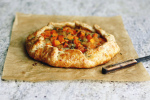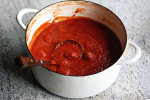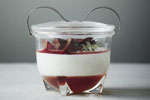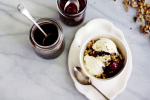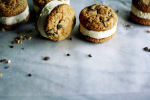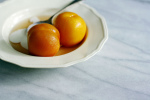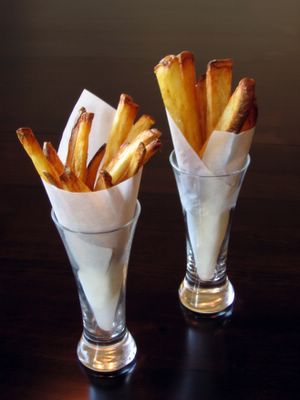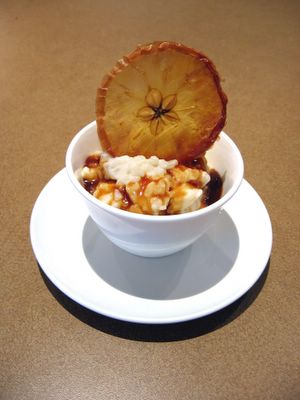We all have our quirks
 Monday, November 14, 2005 at 2:20PM
Monday, November 14, 2005 at 2:20PM As much as I espouse an easygoing approach to all things food related and try to promote creativity and substitutions whenever possible, I have to admit this tendency does not carry over to all aspects of my lifestyle – or even to all my views on things culinary. In fact, there are certain things about which I’m downright pernickety.
For instance, I adore having the right tool for a job. Even though I know that there are a million and one ways to zest a lemon, having the proper tool suited for the end result is a joy. A good chef's knife is your best friend. A well-shaped olive wood spoon makes stirring risotto a pleasure. The same holds true for servingware - you must admit that your gorgeous soba noodle soup is all the more stunning when served in a bowl shaped for optimal slurping. We have shelves in our basement devoted to my inability to say no to the “perfect” vessel.
I am a sucker for organization. Send me to a kitchen store, a craft store or even a stationer; I will happily troll the aisles for containers and caddies, labels and all things compartmentalized. I’ve actually spent time imaging all the things I could organize if I had the proper space and resources – oh how gorgeous my closets could be. I have even been known to have a moment of excitement over a new size of Tupperware. I can’t help it; it’s an obsession.
These two compulsions bring me to the granddaddy of them all — my love of lists. S has had to come to accept and respect my incessant hording of tiny slips of paper, each covered in cryptic notes and itemized records that usually only make sense to me. Maybe this harkens back to my childhood need to overachieve (gold stars were like ambrosia to me), but going through an orderly list and checking off items as they are completed gives me an incomparable sense of accomplishment.
I have lists for everything; for grocery lists, for errands, for Christmas presents, for correspondence, for books to read or topics to research … even the margins of my day planner are not safe from my scribbles.
I could go on, but I’m starting to scare myself.
As of late, I’ve been thinking about two lists in particular. One I’ve had for years, and is added to rather frequently. This list contains names like The French Laundry and Babbo, Fat Duck and El Bulli … and items referring to Chubby Hubby’s dear wife S and her gorgeous dumplings, finding the perfect baguette, and most recently an entry devoted to the idea of convincing Melissa and Clement that a macaron tasting tour of Paris with Michèle is exceedingly necessary. This list chronicles my food fantasies – dishes I want to try, places I long to visit and people I would adore the opportunity to meet.
The second list is much more tailored to my own little kitchen. This one details 50 or so items that make up my running tally of dishes I believe I should attempt to make at least once in my life, or recipes to master. Some are dishes I consider classics, while others are ones that have piqued my interest. Examples include:
8. Bake a quintessential yellow cake with chocolate frosting – think of what Wally and the Beave would have had with a cold glass of milk after school.
17. Make puff pastry and croissant dough from scratch.
21. Perfect my roast chicken recipe.
35. Invite Mom and Dad over for an Indian meal that knocks their socks off.
46. Make French fries at home, and decide once and for all where I stand on the “skinny frites vs. fat chips debate.”
This weekend I decided that #46 was due to be checked off my list. Not only would I tackle an age-old question of taste, but I would also continue my quest to conquer my innate fear of deep-frying. With a Saturday stretching before me, and an eager panel of tasters, I julienned and soaked, dried and fried (doubly, of course) and produced two batches of fries for their highly-scientific consideration. In the left corner, we have what I consider to be an example of the skinny frites tradition, destined for garlicky aiöli. In the other corner, we have the fat chip contender, the perfect partner to deep fried fish and the proper vehicle for gravy and cheese curds for Poutine.
After deliberation, the panel had two votes for skinny and one undecided. Both S and his dear father favoured the more assertively crispy fry, while I was still torn. I appreciated the snap of the exterior of the skinny fry, but could not totally discount the comfort of the baked-potato-reminiscent floury-ness of the chip style.
Each has its place at my table. I may be compulsive, but I can’t seem to play favourites. So #46 remains, but I still think these deserve a gold star.
Definitive fries
I use a hybrid of tips, taken mostly from Tony Bourdain’s Les Halles Cookbook and Alton Brown’s I’m Just Here for the Food. Both employ a double-fry method; first poaching the potatoes at a lower heat, then frying a second time at a higher heat to ensure a crispy exterior. The draining station detailed is that of Alton Brown – it keeps oil droplets from collecting on the grates of the draining rack and helps to prevent soggy fries.
4 large baking potatoes, russets are good
Oil for frying
Salt
For the skinny fries, peel the potatoes (if desired) and cut each one lengthwise into slices 1/3 inch thick. Cut the slices lengthwise into sticks 1/3 inch thick. For the fat chips, prepare as above but slice the potatoes into 1/2 batons. Soak the potatoes in bowls of ice water for at least 30 minutes (as long as overnight) to release the excess starch.
In a deep fat fryer or a heavy bottomed pot, preheat 3 inches of oil (or follow manufacturer’s recommendations) to 300ºF.
Rinse potatoes in a few courses of clean water. Drain, then lay them out on a kitchen towel or paper towel and pat dry. Removing excess moisture at this stage will help reduce the oil from splattering when the potatoes hit the fat.
Assemble your draining station. Take a baking rack and invert it so that the legs are pointing upwards. Place this on top of a few layers of newsprint.
Fry the potatoes, in small batches until translucent and just starting to turn pale gold (approximately 6-8 minutes for the skinny fries, 8-10 for the thick ones). Do not overload the oil, or the temperature will drop too quickly and the potatoes will be uneven. Cooking times will depend on the size of batch and how well you can maintain the oil temperature. Using a spider, basket or tongs remove the first batch to the draining rack. Proceed with remaining potatoes until done. Allow to stand for at least 10 minutes, or up to 2 hours.
When ready to serve, raise the heat of the oil to 375ºF.
Again working in batches, fry the potatoes until golden and crisp, about 2-3 minutes for the skinny and 3-4 for the thick. Remove to the draining rack (lined with fresh paper) for a moment to cool then transfer to a large bowl. Season liberally with salt and toss the fries to coat. Serve immediately.
Serves 4, generously.
Notes:
• A good sprinkling of Maldon salt was all the adornment we needed, but smoked paprika, finely minced garlic and parsley or cumin and turmeric all make great seasonings.
• The aiöli from Laura Washburn makes a perfect accompaniment.
 finger food,
finger food,  recipe,
recipe,  vegetables
vegetables 

